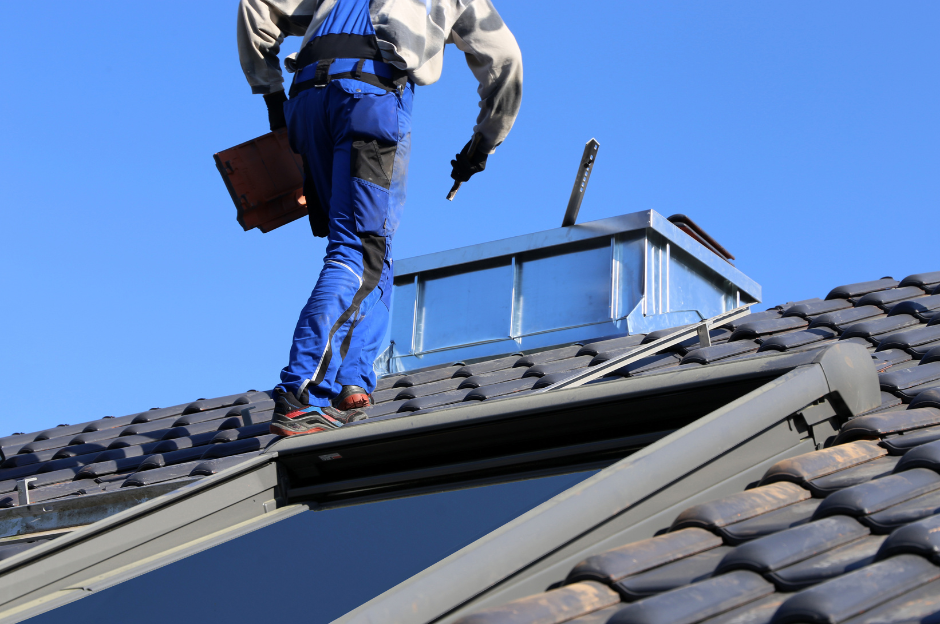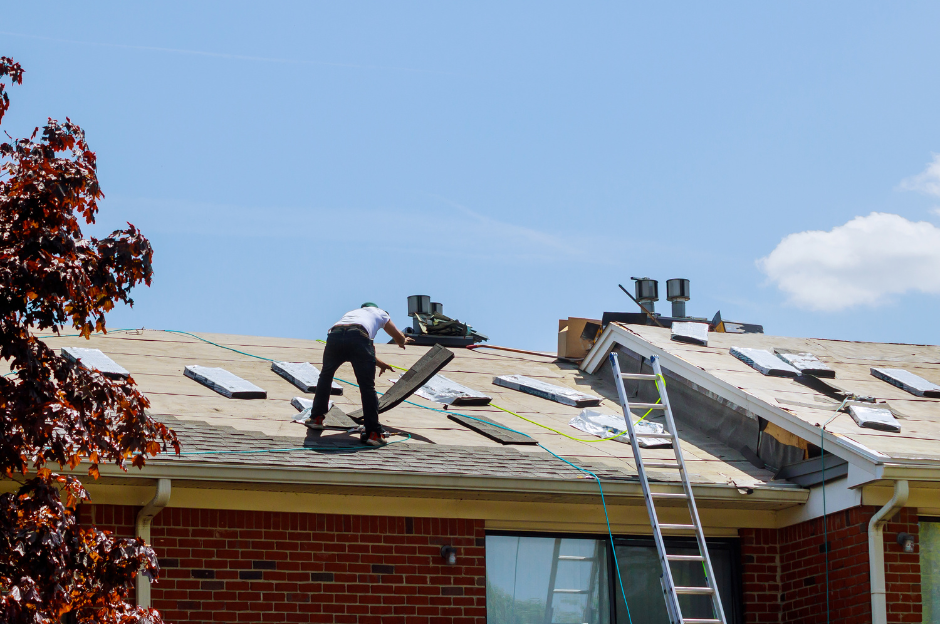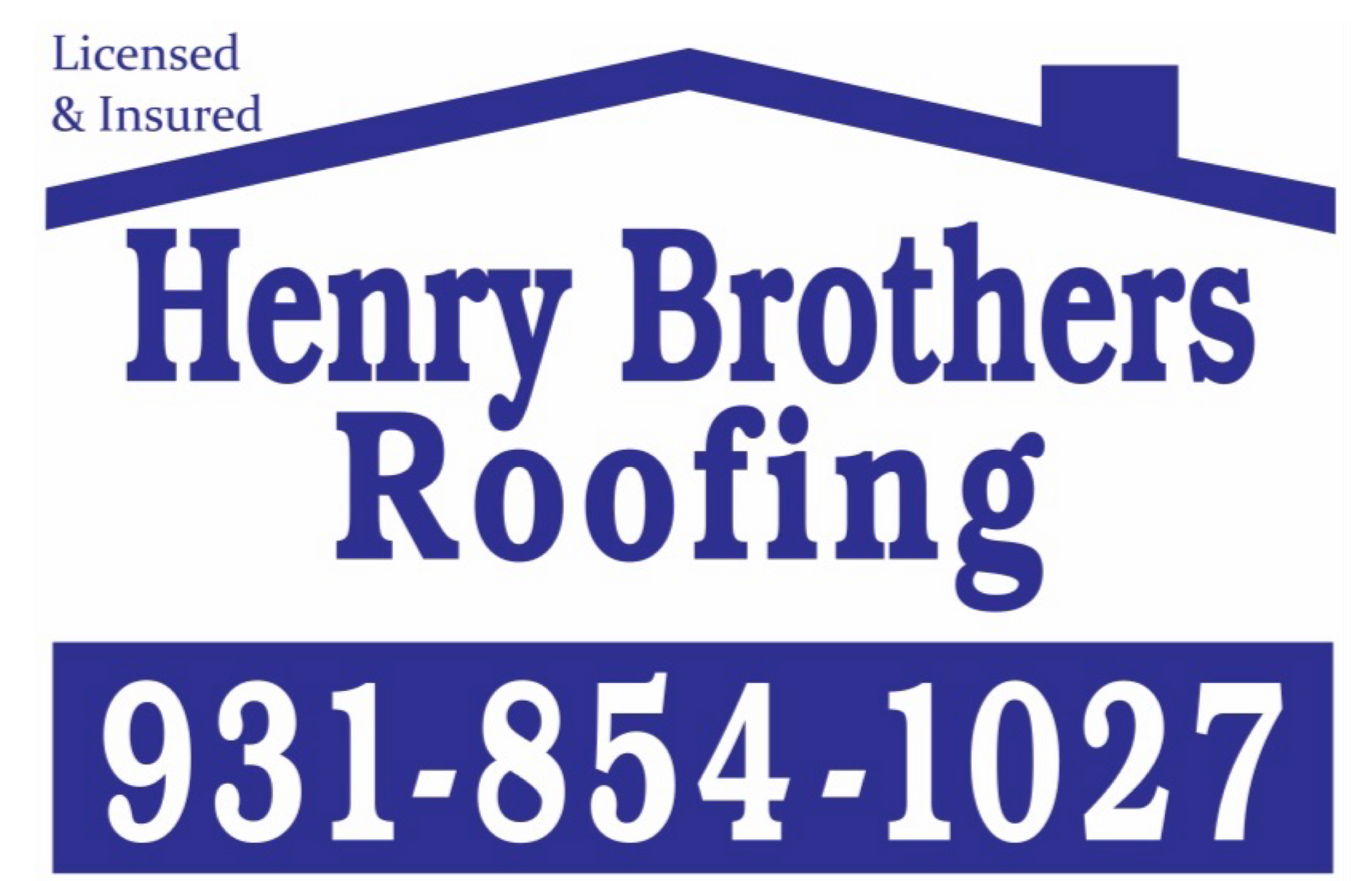Roofing Solutions for Sloped Roofs: Tips for Installation and Maintenance
August 16, 2024

Sloped roofs are a popular architectural feature due to their aesthetic appeal and functional advantages. They offer efficient water drainage, better insulation, and often, enhanced durability. However, installing and maintaining a sloped roof comes with its own set of challenges. This blog post will provide comprehensive tips on roofing solutions for sloped roofs, covering installation, material choices, and ongoing maintenance to ensure longevity and performance.
Understanding Sloped Roofs
Sloped roofs are designed with an angled pitch that allows rain, snow, and debris to slide off rather than accumulating. This design not only enhances the roof's durability but also improves the building's energy efficiency. Common types of sloped roofs include gabled, hipped, and shed roofs. Each type has specific installation and maintenance requirements that are crucial for optimal performance.
Choosing the Right Roofing Material
Selecting the right roofing material is crucial for the durability and effectiveness of a sloped roof. Here are some popular options:
Asphalt Shingles:
Pros: Asphalt shingles are affordable, easy to install, and available in various colors and styles. They are a common choice for residential properties.
Cons: They have a shorter lifespan compared to some other materials and may be less effective in extreme weather conditions.
Metal Roofing:
Pros: Metal roofing is highly durable, fire-resistant, and energy-efficient. It can withstand harsh weather conditions and has a long lifespan.
Cons: Metal roofing can be more expensive than asphalt shingles and may require professional installation to ensure proper sealing and fit.
Clay or Concrete Tiles:
Pros: Clay and concrete tiles offer a classic look and exceptional durability. They are resistant to fire and can withstand extreme weather.
Cons: They are heavy and may require additional structural support. Installation can be complex and costly.
Slate Roofing:
Pros: Slate is known for its natural beauty and exceptional longevity. It is highly resistant to fire and weather.
Cons: Slate roofing is expensive and requires skilled installation. The material is also quite heavy, necessitating a strong roof structure.
Wood Shingles or Shakes:
Pros: Wood shingles and shakes provide a natural, rustic appearance and are good insulators.
Cons: They require regular maintenance to prevent rot and may be susceptible to fire if not treated.
Installation Tips
Proper installation is critical to the performance and longevity of a sloped roof. Here are some essential tips:
Assess the Roof Structure:
Before installation, evaluate the existing roof structure to ensure it can support the new roofing material. Check for any signs of damage or decay in the underlying structure and address these issues before proceeding.
Use Quality Underlayment:
A quality underlayment provides an additional layer of protection against water infiltration. For sloped roofs, choose a waterproof or water-resistant underlayment, such as synthetic felt or modified bitumen.
Ensure Proper Ventilation:
Proper ventilation is essential for preventing moisture buildup and maintaining energy efficiency. Install ridge vents, soffit vents, or other ventilation systems to allow air circulation and prevent heat and moisture accumulation.
Follow Manufacturer Guidelines:
Adhere to the manufacturer’s installation guidelines for the chosen roofing material. This ensures that the roof performs as expected and helps maintain any warranties.
Install Flashing Correctly:
Flashing is used to seal joints and prevent water leaks. Ensure that flashing is installed correctly around roof penetrations, such as chimneys, skylights, and vents. Properly installed flashing helps prevent water damage and extends the roof's lifespan.
Pay Attention to Overlaps and Seams:
Overlaps and seams should be installed according to the material’s specifications. Proper overlapping and sealing are crucial for preventing water infiltration and ensuring a watertight roof.
Use Proper Fasteners:
Choose fasteners that are compatible with the roofing material and climate. Ensure they are installed at the correct depth and spacing to prevent damage and ensure a secure fit.
Inspect Work Regularly:
During installation, regularly inspect the work to ensure it meets quality standards. Look for any signs of improper installation, such as gaps or uneven coverage, and address them promptly.
Maintenance Tips
Regular maintenance is key to extending the life of a sloped roof and preventing costly repairs. Here are some maintenance tips:
Inspect the Roof Regularly:
Conduct visual inspections of your roof at least twice a year, preferably in the spring and fall. Look for signs of damage, such as missing or damaged shingles, cracked tiles, or rusted metal.
Clean Gutters and Downspouts:
Keep gutters and downspouts free of debris to ensure proper water drainage. Clogged gutters can lead to water backup and damage to the roof and underlying structure.
Check for Moss and Algae:
Moss and algae can grow on roofing materials, especially in shaded or damp areas. Remove moss and algae promptly to prevent damage. Use a soft brush and a mild cleaning solution to clean affected areas.
Maintain Roof Valleys:
Roof valleys are prone to collecting debris and water. Regularly clean valleys and inspect them for signs of wear or damage. Ensure that the flashing in valleys is intact and properly sealed.
Repair Damaged Shingles or Tiles:
Replace any damaged or missing shingles or tiles as soon as possible. Leaving damaged areas unrepaired can lead to leaks and further damage.
Address Leaks Promptly:
If you notice any signs of leaks, such as water stains on ceilings or walls, address them immediately. Locate the source of the leak and repair it to prevent further damage.
Trim Overhanging Branches:
Trim overhanging branches that could fall on the roof or create debris. Keeping branches away from the roof helps prevent damage and reduces the risk of clogged gutters.
Inspect Flashing and Seals:
Regularly check the condition of flashing and seals around roof penetrations. Replace any damaged or deteriorated flashing to maintain a watertight seal.
Ensure Proper Insulation:
Proper insulation in the attic or roof space helps regulate temperature and prevent condensation. Check insulation levels and ensure they meet recommended standards.
Professional Inspections:
Consider hiring a professional roofer for a thorough inspection every few years. A professional can identify potential issues that may not be visible during routine inspections and provide expert advice on maintenance and repairs.
Seasonal Considerations
Different seasons can impact roof maintenance and require specific attention:
Spring:
After winter, inspect your roof for damage caused by snow and ice. Clean gutters and check for any issues that may have developed over the winter months.
Summer:
The summer heat can cause roofing materials to expand and contract. Check for any signs of wear or damage and address them before the cooler months arrive.
Fall:
Clean gutters and downspouts to remove leaves and debris. Inspect the roof for any damage caused by falling branches or other debris.
Winter:
Monitor for ice dams and ensure proper insulation to prevent heat loss and ice buildup. Keep roof areas clear of snow to prevent excessive weight and potential damage.
Henry Brothers Blog

Multi-family buildings pose unique challenges for roofing—requiring durable, efficient, and cost-effective solutions that serve multiple households simultaneously. Selecting the right system and partner can significantly impact long-term maintenance and energy bills. Common Roofing Challenges in Multi-Family Properties Large surface areas Multiple penetrations (vents, HVAC units) Noise and disruption during installation High foot traffic for maintenance Energy efficiency Efficient Roofing Materials TPO (Thermoplastic Polyolefin): Lightweight, reflective, and energy-efficient. Ideal for flat or low-slope roofs. Modified Bitumen: Offers durability and weather resistance. Works well for larger structures. Metal Roofing: Long-lasting and low-maintenance. Higher upfront costs but excellent ROI. Asphalt Shingles: Budget-friendly and easy to repair. Better for pitched multi-family homes. Affordability Strategies Bulk Purchasing Discounts: Roofers often offer lower rates for large-scale projects. Energy Rebates and Tax Credits: Cool roofing materials may qualify for incentives. Roof Coatings: Extend lifespan and defer full replacements. Preventive Maintenance Plans: Regular inspections reduce major repair costs. Partnering with the Right Contractor Choose a roofing contractor experienced in multi-family dwellings. Look for: References from similar projects Warranty offerings Insurance and licensing Clear timelines and communication protocols

Your roof is one of the most defining features of your home’s architecture. A well-designed roof complements the style, era, and character of your house, enhancing both curb appeal and value. Whether you own a modern home, a Victorian masterpiece, or a Mediterranean villa, choosing the right roofing materials and design is essential. This article explores custom roofing solutions for different architectural styles, ensuring your roof is both aesthetic and functional. 1. Why Custom Roofing Matters A one-size-fits-all approach doesn’t work for roofing. Here's why customization is key: 🏡 Preserves Architectural Integrity The roof should match the home's era and design. A poorly chosen roof can clash with the architecture and reduce property value. 💰 Boosts Home Value & Curb Appeal A well-matched roof enhances visual appeal, making your home stand out. Homebuyers prefer houses with roofs that fit the overall design. 🌦 Enhances Durability & Efficiency Custom roofing accounts for climate, slope, and insulation. Choosing the right materials ensures longer roof life and energy efficiency. 2. Best Roofing Materials for Different Architectural Styles 🏗 Modern & Contemporary Homes Modern architecture focuses on clean lines, minimalism, and energy efficiency. Best Roofing Options: ✅ Flat Roofs – Achieve a sleek, contemporary look. ✅ Metal Roofing – Durable and complements modern aesthetics. ✅ Green Roofs – Eco-friendly and visually striking. ✅ Solar Panels – Integrate renewable energy solutions. 🏰 Victorian & Gothic Revival Homes These homes have steep-pitched roofs, turrets, and elaborate detailing. Best Roofing Options: ✅ Slate Tiles – Classic, long-lasting, and historically accurate. ✅ Wood Shingles – Adds charm and natural beauty. ✅ Decorative Metal Accents – Enhances ornate Victorian designs. 🏝 Mediterranean & Spanish-Style Homes Inspired by European coastal homes, these feature stucco walls and curved archways. Best Roofing Options: ✅ Clay or Terracotta Tiles – Traditional, weather-resistant, and elegant. ✅ Concrete Tiles – Durable and available in various textures and colors. ✅ Synthetic Spanish Tiles – Modern, lightweight alternatives with classic appeal. 🌲 Rustic & Cabin-Style Homes These homes emphasize natural materials and a cozy aesthetic. Best Roofing Options: ✅ Wood Shakes – Blends seamlessly with wooded surroundings. ✅ Metal Roofing (Rustic Finish) – Durable with a weathered, natural look. ✅ Green Roofs – Enhances sustainability and insulation. 🏡 Colonial & Traditional Homes These timeless homes focus on symmetry and classic proportions. Best Roofing Options: ✅ Asphalt Shingles – Affordable and available in classic shades. ✅ Slate Roofing – Elegant and historically accurate. ✅ Copper or Metal Accents – Enhances historic charm. 🏛 Mid-Century Modern Homes This style features low-sloped roofs, large windows, and open spaces. Best Roofing Options: ✅ Flat or Low-Slope Roofs – Clean, minimalistic aesthetic. ✅ Rubber or Membrane Roofing – Ideal for low-pitch roofs. ✅ Green or Living Roofs – Complements eco-conscious designs. 🏰 Tudor-Style Homes Tudor homes have steeply pitched gables and decorative half-timbering. Best Roofing Options: ✅ Wood or Synthetic Shake Shingles – Traditional and authentic. ✅ Slate Roofing – Enhances historic charm and durability. ✅ Architectural Asphalt Shingles – Mimics wood or slate at a lower cost. 3. Custom Roofing Features to Consider Beyond materials, adding customized elements can elevate your roof’s design. 🔹 Roof Color & Texture Dark roofs enhance historic and formal homes. Light-colored roofs reflect heat, ideal for warm climates. Textured materials (slate, shakes) add visual depth. 🏠 Roof Shape & Pitch Steep roofs fit Gothic and Victorian styles. Flat or low-sloped roofs match modern homes. Custom pitches enhance energy efficiency and durability. 🔆 Skylights & Roof Windows Adds natural light and enhances ventilation. Works well in modern, contemporary, and rustic homes. 🌞 Solar Roofing & Smart Technology Solar shingles blend seamlessly into modern & eco-friendly homes. Smart roofing systems adjust ventilation & insulation automatically. 4. Custom Roofing: How to Get Started 1️⃣ Consult a Roofing Expert Work with an architect or contractor specializing in custom roofs. Ensure they understand historical accuracy and climate considerations. 2️⃣ Choose High-Quality Materials Invest in durability, energy efficiency, and aesthetics. Select roofing that aligns with your home’s style and longevity needs. 3️⃣ Consider Long-Term Costs & ROI Some materials have higher upfront costs but last longer and increase home value. Energy-efficient options can reduce heating and cooling expenses. 4️⃣ Verify Local Building Codes Some roofing styles require special permits. Ensure compliance with HOA guidelines and historical district regulations.


